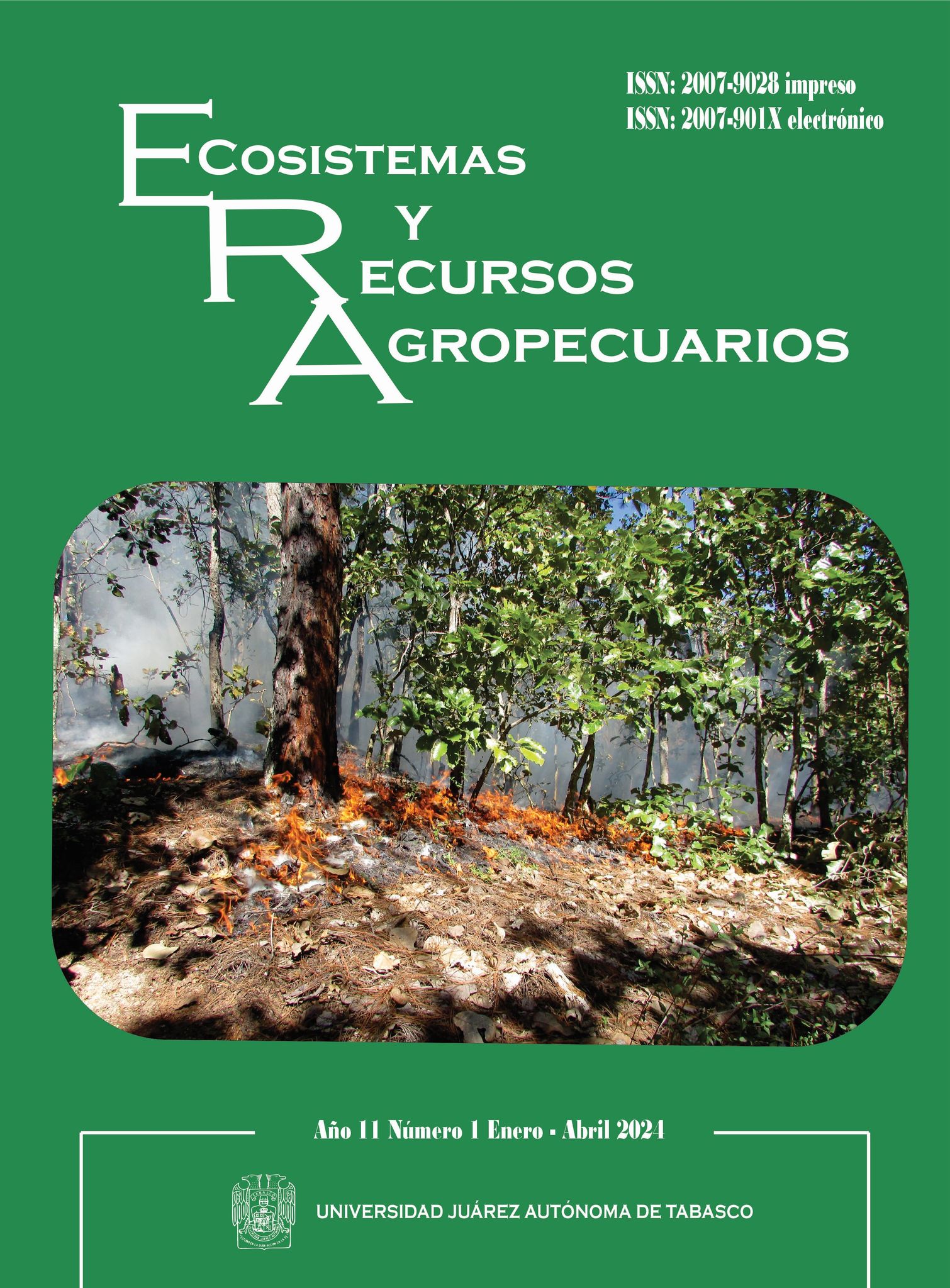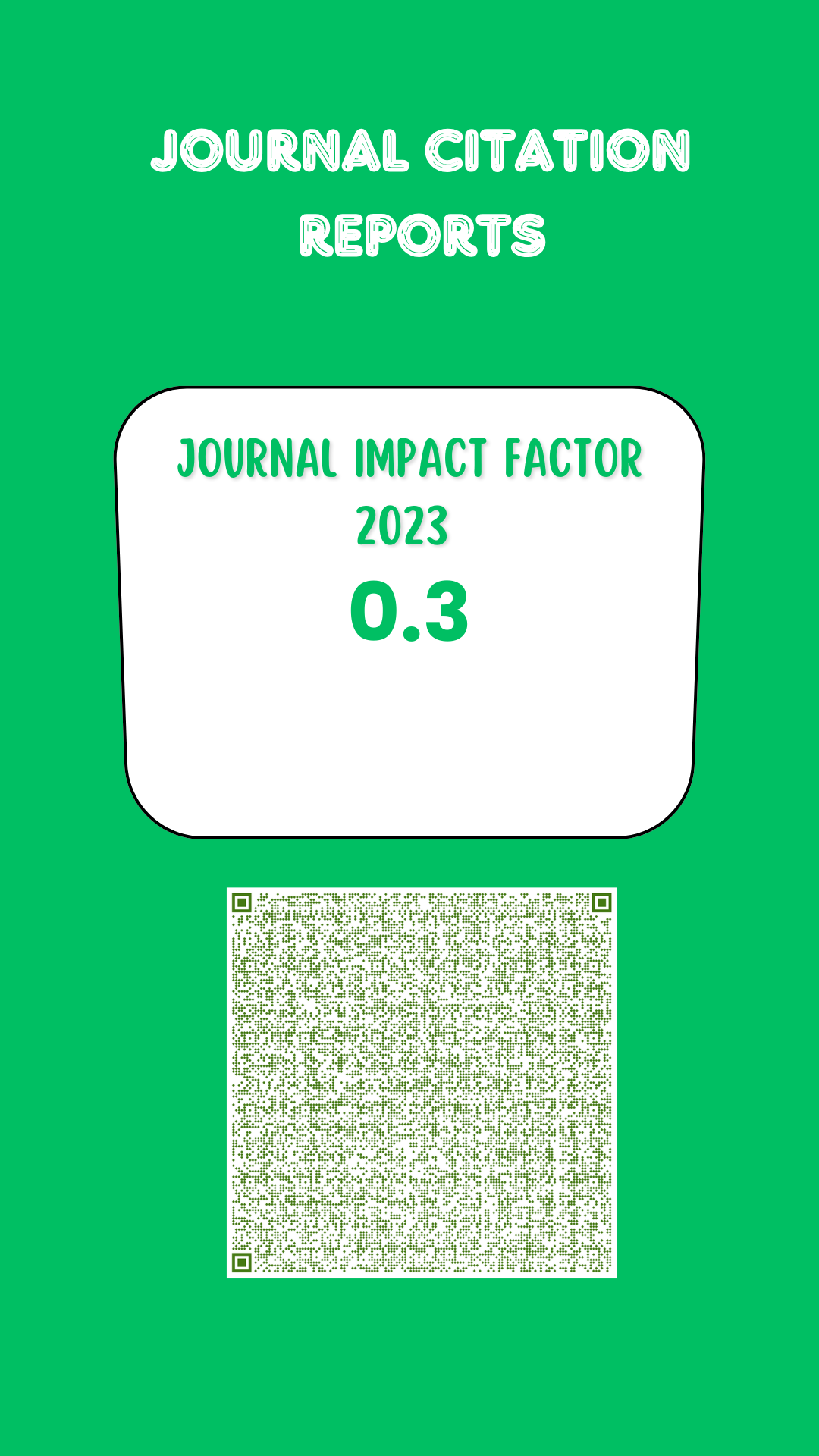Microorganisms in the biofertilization of corn crop as a complement to chemical fertilization
DOI:
https://doi.org/10.19136/era.a11n1.3903Keywords:
Azospirillum brasilense, Bacillus subtilis, inoculation, Serendipita indica, Zea mays L.Abstract
In Mexico, the nutrients to the corn crop are supplied with chemical fertilizers, however, the price of these inputs requires looking for other alternatives to reduce costs, without reducing production. The objective of this work was to determine the individual and combined effect of Azospirillum brasilense, Bacillus subtilis, and Serendipita indica, (eight treatments) on corn production. The crop was established in Zacatecas, Mexico, under greenhouse conditions, in the year 2022. The microorganism's inoculation was carried out at the sowing time. The eight treatments with microorganisms were evaluated in an experimental design in randomized blocks with four repetitions. With the co-inoculation of A. brasilense and S. indica the yield of the entire plant was increased, and the highest grain yield with A. brasilense and B. subtilis, this last increased, compared with the control treatment, it was 40%.
Downloads
References
Bolivar-Anillo HJ, González-Rodríguez VE, Cantoral JM, García-Sánchez D, Collado IG, Garrido C (2021) Endophytic bacteria Bacillus subtilis, isolated from Zea mays, as potential biocontrol agent against Botrytis cinerea. Biology 10(6): 492. https://doi.org/10.3390/biology10060492
Boorboori MR, Zhang HY (2022) The role of Serendipita indica (Piriformospora indica) in improving plant resistance to drought and salinity stresses. Biology 11(17): 952. https://doi.org/10.3390/biology11070952
Braccini AL, Dan LGM, Piccinin GG, Albrecht LP, Barbosa MC, Ortiz AHT (2012) Seed inoculation with Azospirillum brasilense, associated with the use of bioregulators in maize. Revista Caatinga 25(2): 17-23.
Hernández-Castellano M, Terry-Espinosa C, Almoguea-Fernández M (2015) Uso de Azospirillum en la agricultura. Revista Agroecosistemas 3(1): 401-413.
Centro de Estudios para el Desarrollo Rural Sustentable y la Soberanía Alimentaria (CEDRSSA ) (2019) Producción de granos básicos y suficiencia alimentaria 2019-2024. Palacio Legislativo de San Lazaro, Ciudad de México. 39ProduccionGranosBásicos.pdf (cedrssa.gob.mx)
Cheng C, Li D, Qi Q, Sun X, Raphael-Anue M, Mahoudjro-David B, et al. (2020) The root endophytic fungus Serendipita indica improves resistance of banana to Fusarium oxysporum f. sp. cubense tropical race 4. European Journal of Plant Pathology 156: 87–100. https://doi.org/10.1007/s10658-019-01863-3
Díaz-Franco A, Magallanes-Estala A, Aguado-Santacruz A, Hernández-Mendoza JL (2015) Respuesta de la soya a inoculantes microbianos en el norte de Tamaulipas, México. Revista Mexicana de Ciencias Agrícolas 6(2): 227-238.
Di Rienzo JA, Balzarini M, González L, Casanoves F, Tablada M, Robledo CW (2020) InfoStat. Software estadístico, versión 2020. https://www.infostat.com.ar/index.
Fernandes-Domingues C, Cecato U, Biserra TT, Mamédio D, Galbeiro S (2020) Azospirillum spp. en gramíneas y forrajeras Revisión. Revista Mexicana de Ciencias Pecuarias 11(1): 223–40. https://doi.org/10.22319/rmcp.v11i1.4951
Ferreira NC, Mazzuchelli RCL, Pacheco AC, de Araujo FF, Antunes JEL, de Araujo ASF (2018) Bacillus subtilis improves maize tolerance to salinity. Ciencia Rural 48(8): 6–9. https://doi.org/10.1590/0103-8478cr20170910
García RA, Lovaisa NC, Ulla EL (2015) Aislamiento caracterización de bacterias solubilizadoras de fosfatos del noroeste argentino y su efecto en la promoción de crecimiento en maíz (Zea mays L.). Revista Agronómica Del Noreste Argentino 35(1): 13-28.
Genre A, Lanfranco L, Perotto S, Bonfante P (2020) Unique and common traits in mycorrhizal symbioses. Nature Reviews Microbiology 18: 649–660. https://doi.org/10.1038/s41579-020-0402-3
Gómez-Godínez LJ, Valverde SLF, Romero JCM, Martínez-Romero E (2019) Metatranscriptomics and nitrogen fixation from the rhizoplane of maize plantlets inoculated with a group of PGPRs. Systematic and Applied Microbiology 42(4): 517-525. https://doi.org/10.1016/j.syapm.2019.05.003Get rights and content
Hauka FIA (2000) Effect of using single and composite inoculation with Azospirillum brasilense, Bacillus megaterium and Glomus macrocarpus for improving growth of Zea mays. Journal of Agriculture Chemistry and Biotechnology 25(4): 2327-2338. DOI: 10.21608/JACB.2000.258940
Hungria M, Campo RJ, Souza EM, Pedrosa FO (2010) Inoculation with selected strains of Azospirillum brasilense and A. lipoferum improves yields of maize and wheat in Brazil. Plant and Soil 331: 413–425. DOI 10.1007/s11104-009-0262-0
Hungria M, Barbosa JZ, Rondina ABL, Nogueira MA (2022) Improving maize sustainability with partial replacement of N fertilizers by inoculation with Azospirillum brasilense. Agronomy Journal 114(5): 2969-2980. https://doi.org/10.1002/agj2.21150
López-Perea R (2019) Maíz para México plan estratégico 2030. Centro Internacional de Mejoramiento de Maíz y Trigo (CIMMYT). 146 p. 60937.pdf (cimmyt.org)
Mahanty T, Bhattacharjee S, Goswami M, Bhattacharyya P, Das B, Ghosh A, et al. (2016) Biofertilizers: a potential approach for sustainable agriculture development. Environmental Science and Pollution Research 24: 3315–3335. DOI 10.1007/s11356-016-8104-0
Martínez-Reyes L, Aguilar-Jiménez CE, Carcaño-Montiel MG, Galdámez-Galdámez J, Gutiérrez-Martínez A, Morales-Cabrera JA, et al. (2018) Biofertilización y fertilización química en maíz (Zea mays L.) en Villaflores, Chiapas, México. Siembra 5(1): 26-37. https://doi.org/10.29166/siembra.v5i1.1425
Mishra DJ, Singh R, Mishra UK, Kumar SS (2013) Role of bio-fertilizer in organic agriculture: a review. Research Journal of Recent Sciences 2: 39–41.
Morales-García YE, Baez A, Quintero-Hernández V, Molina-Romero D, Rivera-Urbalejo A, Pazos-Rojas LA (2019) Bacterial Mixtures, the Future Generation of Inoculants for Sustainable Crop Production. In: Maheshwari D, Dheeman S (eds) Field Crops: Sustainable Management by PGPR. Sustainable Development and Biodiversity, vol 23. pp: 11-44. Springer, Cham. https://doi.org/10.1007/978-3-030-30926-8_2
Nguyen ML, Spaepen S, Du Jardin P, Delaplace P (2019) Biostimulant effects of rhizobacteria on wheat growth and nutrient uptake depend on nitrogen application and plant development. Archives of Agronomy and Soil Science 65(1): 58-73. https://doi.org/10.1080/03650340.2018.1485074
Nosheen S, Ajmal I, Song Y (2021) Microbes as biofertilizers, a potential approach for sustainable crop production. Sustainability 13: 1868. https://doi.org/10.3390/ su13041868
Pourraeisi A, Boorboori MR, Sepehri M (2022) A comparison of the effects of Rhizophagus intraradices, Serendipita indica, and Pseudomonas fluorescens on soil and Zea maize L. properties under drought stress condition. International Journal of Sustainable Agricultural Research 9(4): 152-167. DOI: 10.18488/ijsar.v9i4.3167
Robles C, Barea JM (2004) Respuesta de la planta y del suelo a inoculación con Glomus intraradices y rizobacterias en maíz en cultivo intensivo. Terra Latinoamericana 22(1): 59-69.
Rodríguez-Hernández MG, Gallegos-Robles MÁ, Rodríguez-Sifuentes L, Fortis-Hernández M, Luna-Ortega J, González-Salas U (2020) Native Bacillus spp. Strains as sustainable alternative in the yield of corn forage. Terra Latinoamericana 38(2): 323–331. https://doi.org/10.28940/terra.v38i2.690
Rojas MM, Tejera B, Bosh DM, Ríos Y. Rodríguez J, Heydrich M (2016) Potencialidades de cepas de Bacillus para la promoción del crecimiento del maíz (Zea mays L.). Cuban Journal of Agricultural Science. 50(3): 485–496.
Saleem S, Sekara A, Pokluda R (2022) Serendipita indica—A review from agricultural point of view. Plants 11(24): 3417. https://doi.org/10.3390/plants11243417
Sánchez-Hernández GA, Acevedo-Ruiz E, Aparicio-Juárez A, Guerrero-Rodríguez JD, Olvera-Hernández JI, Hernández-Salgado JH, et al. (2023) Fertilización química e inoculación con Azospirillum y hongos micorrizicos del cultivo de jitomate en invernadero. Terra Latinoamericana 41: 1-15. https://doi.org/10.28940/terra. v41i0.991
Sarkar S, Dey A, Kumar V, Batiha GES, El-Esawi MA, Tomczyk M, et al. (2021) Fungal endophyte: an interactive endosymbiont with the capability of modulating host physiology in myriad ways. Frontiers in Plant Science 12: 701800. doi: 10.3389/fpls.2021.701800
Servicio de Información Agroalimentaria y Pesquera (SIAP) (2022) Anuario estadístico de la Producción Agrícola en México 2021. https://nube.siap.gob.mx/cierreagricola/. (Consultada el 16 de mayo de 2023).
Skonieski FR, Viégas J, Martin TN, Mingotti CCA, Naetzold S, Tonin TJ, et al. (2019) Effect of nitrogen topdressing fertilization and inoculation of seeds with Azospirillum brasilense on corn yield and agronomic characteristics. Agronomy 9(12): 812. https://doi.org/10.3390/agronomy9120812
Suárez K (2022) Los fertilizantes en México multiplican su precio ante la ofensiva rusa en Ucrania. Diario EL PAÍS, en América Latina, 30 de marzo de 2022 – 21:30 CST. Los fertilizantes en México multiplican su precio ante la ofensiva rusa en Ucrania | EL PAÍS México (elpais.com).
Swędrzyńska D, Sawicka A (2000) Effect of inoculation with Azospirillum brasilense on development and yielding of maize (Zea mays ssp. Saccharata L.) under different cultivation conditions. Polish Journal of Environmental Studies 9(6): 505-509.
Tilhaqui-Bertasello LE, Augusto-Filla V, Prates-Coelho A, Vitti-Môro G (2021) Agronomic performance of maize genotypes. Revista de la Facultad de Ciencias Agrarias–UNCuyo 53(1): 68-78. https://doi.org/10.48162/rev.39.007
Tyagi J, Mishra A, Kumari S, Singh S, Agarwal H, Pudake RN, et al. (2023) Deploying a microbial consortium of Serendipita indica, Rhizophagus intraradices, and Azotobacter chroococcum to boost drought tolerance in maize. Environmental and Experimental Botany 206: 105-142. https://doi.org/10.1016/j.envexpbot.2022.105142
Uribe-Valle G, Dzib-Echeverría R (2006) Micorriza arbuscular (Glomus intraradices), Azospirillum brasilense y Brassinoesteroide en la producción de maíz en suelo luvisol. Agricultura Técnica en México 32(1): 67-76.
Villareal-Delgado MF, Villa-Rodríguez ED, Cira-Chávez KA, Estrada-Alvarado MI, Parra.Cota FI, Santos-Villalobos F (2018) El género Bacillus como agente de control biológico y sus implicaciones en la bioseguridad agrícola. Revista Mexicana de Fitopatología 36(1): 95-130. DOI:10.18781/R.MEX.FIT.1706-5
Downloads
Published
Issue
Section
License
Copyright (c) 2024 Ecosistemas y Recursos Agropecuarios

This work is licensed under a Creative Commons Attribution-NonCommercial-ShareAlike 4.0 International License.
Aviso de copyright
Los autores que se envían a esta revista aceptan los siguientes términos:
una. Los autores conservan los derechos de autor y garantizan a la revista el derecho a ser la primera publicación del trabajo con una licencia de atribución de Creative Commons que permite a otros compartir el trabajo con un reconocimiento de la autoría del trabajo y la publicación inicial en esta revista.
B. Los autores pueden establecer acuerdos complementarios separados para la distribución no exclusiva de la versión del trabajo publicado en la revista (por ejemplo, en un repositorio institucional o publicarlo en un libro), con un reconocimiento de su publicación inicial en esta revista.
C. Se permite y se anima a los autores a difundir su trabajo electrónicamente (por ejemplo, en repositorios institucionales o en su propio sitio web) antes y durante el proceso de envío, ya que puede conducir a intercambios productivos, así como a una cita más temprana y más extensa del trabajo publicado. (Consulte El efecto del acceso abierto).



